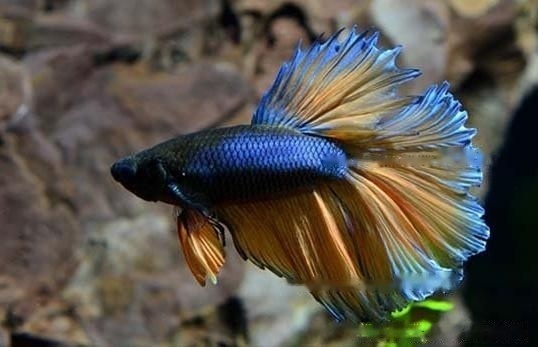Thai fighting fish, also known as Wucai fighting fish, is a perch-shaped fish native to Thailand. Thai betta species are very similar to other betta fish. They have a very strong ability to adapt to the environment, their appearance is also bright and colorful, and they are relatively simple to raise. According to the color depth of Thai betta, people have divided it into dark body and light body, and the body color of the improved Thai betta is mainly colorful single and double colors, as well as marble lines and butterfly wings. It's a bit difficult to see a single-colored betta in the aquarium market because it's relatively rare.

1. Appearance characteristics of Thai fighting fish
The body of Thai fighting fish can reach five to six centimeters in length, especially ten centimeters . Its monochromatic fish species have five colors: black, white, red, yellow and blue, while the blue and red Thai betta are more common in the aquarium market, and many aquarium enthusiasts especially like pure red. thai betta.
The male and female Thai bettas are very similar, and you can't tell them apart just by looking at them on the surface. So be sure to observe carefully, the female Thai betta has ovaries. You can look for fallopian tubes, which are the genitals of female Betta fish. If you can see small white things on the belly from the side of their body, it must be a female Betta.
2. Habits and characteristics of Thai fighting fish
Thai fighting fish is more aggressive by nature, two male Thai fighting fish meet will definitely cause war, when they fight, their fins The operculum and the operculum are open, and they use their bodies to attack each other, and then use their mouths to bite. This also reminds breeders that two adult bettas cannot be kept in the same aquarium.
The Thai betta is suitable for living in weakly acidic soft water of 22 to 24 degrees Celsius, but if the water temperature is lower than 18 degrees, it may lead to death. They like to eat live feed, and live food such as red blood worms, water fleas, and nematodes can stimulate their appetite.
![[Dog Training 5] The training method of pet dog dining etiquette](/static/img/12192/12192_1.jpg)




